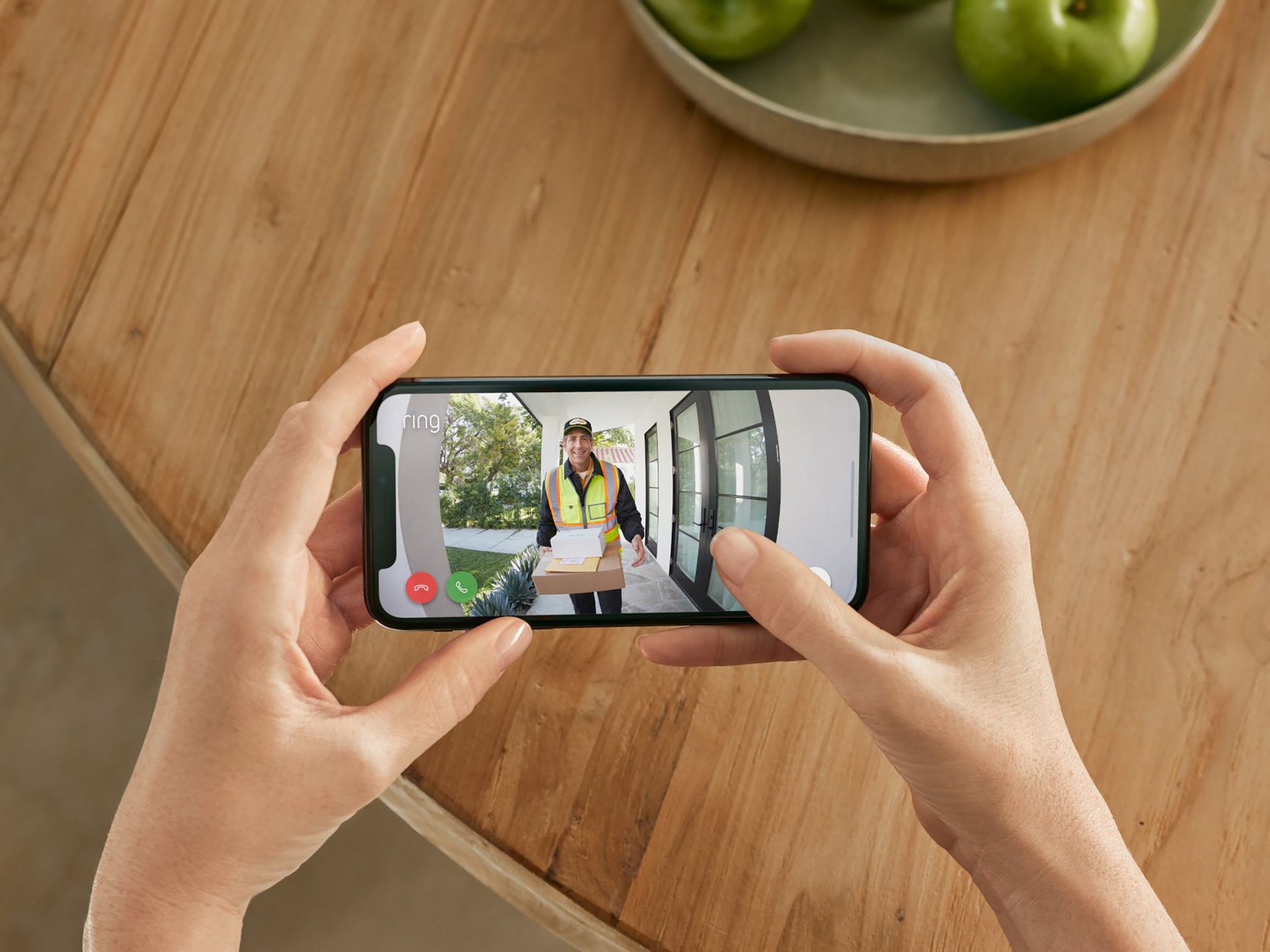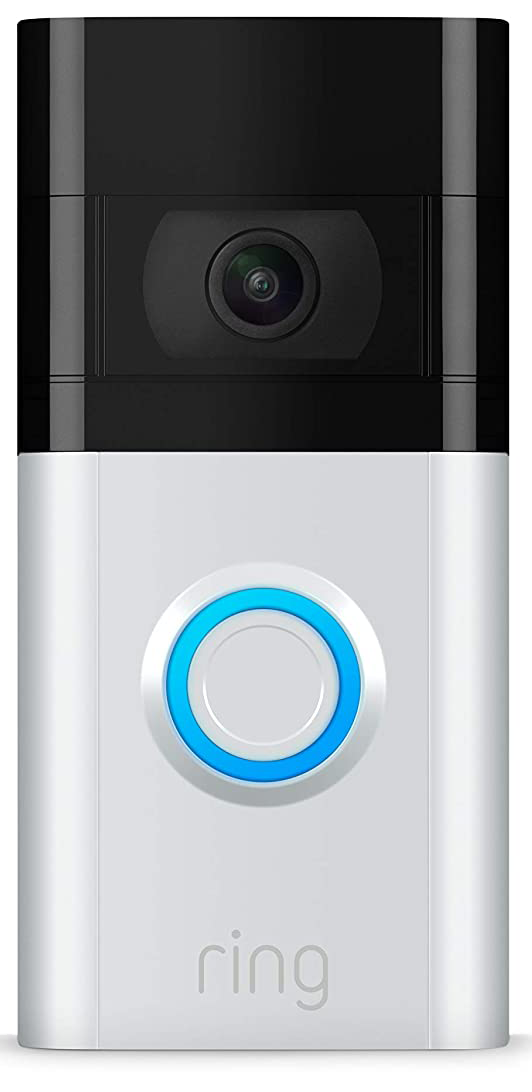Ring Video Doorbell 3 vs. Ring Video Doorbell: Is it finally time to upgrade?

Ring Video Doorbell 3

Four years is a long time in the world of tech, and a lot has changed since the original Ring Video Doorbell launched. The third generation brings significant improvements to the table, including higher resolution video, support for faster 5GHz Wi-Fi, better motion detection, an easily-removable rechargeable battery, and better overall construction. It's not just a huge spec upgrade; it's a quality-of-life upgrade worthy of your cash.
Ring Video Doorbell 3
A worthy upgrade
Ring Video Doorbell

The original Ring Video Doorbell made a name for itself by being an affordable wireless video doorbell that actually worked. Over the years, Ring has added significant value to its seminal video doorbell, but hardware limitations are starting to show themselves and make this a product that's beginning to feel a bit on the old side.
Ring Video Doorbell
The OG
The Ring Video Doorbell was an incredibly important device upon launch. As one of the earliest video doorbells on the market, it set the stage for how things should be done. Unfortunately, its hardware hasn't aged all that well, despite some important software updates. Simply put, an older mobile, battery-powered chipset (like the one powering the original Ring Video Doorbell) quickly shows its age in a world of constant technological improvements.
The Ring Video Doorbell 3 takes every single shortcoming of the original and improves upon it, only falling short in a single area: field of view. Despite this minor shortcoming, the Ring Video Doorbell 3 is absolutely worth the upgrade for folks wanting to stay in the Ring ecosystem.
Ring Video Doorbell 3 Significantly more convenient

The original Ring Video Doorbell wasn't just a pioneer in connected video doorbells; it was also a pioneer in wireless video doorbells. Being wireless is crucial because it makes installation a breeze and also makes it possible for renters to utilize a video doorbell. However, the original Ring Video Doorbell had one significant setback: the battery was built-in, making it difficult to charge. On top of that, if you ever let the battery completely die, the Ring Video Doorbell would reset and have to be set up from scratch again.
| Header Cell - Column 0 | Ring Video Doorbell 3 | Ring Video Doorbell |
|---|---|---|
| Price (MSRP) | $200 | $100 |
| Rechargeable battery | Yes, removable | Yes, built-in |
| Video resolution | 1080p | 720p |
| Field of view | 160 degrees | 180 degrees |
| Dimensions | 5.1 in. x 2.4 in x 1.1 in. | 4.98 in. x 2.43 in. x .87 in. |
| Live view | Yes | Only when hard-wired |
| Connectivity | 2.4GHz and 5GHz Wi-Fi | 2.4GHz Wi-Fi only |
| Motion detection | Adjustable motion zones plus near zone | Basic detection |
| Privacy Zones | Yes | No |
| Smart Assistant Integration | Amazon Alexa | Amazon Alexa |
Ring Video Doorbell 3 features a quick-release battery pack that charges separately and easily. On top of that, you don't have to worry about it losing the configuration when you remove the battery — Ring solved that problem with the advent of the battery pack. Having a removable battery also means that you can buy a second battery to swap out so that there's no real downtime at all, adding an extra layer of convenience to the process.
The original Ring Video Doorbell's battery-powered nature also came with some usage restrictions. While you could view the feed from your front door at any time if the Ring Video Doorbell was hardwired into the wall, being on battery power would disable this feature. Ring Video Doorbell 3 doesn't have any such limitation and can be used as an outdoor camera at any time, not just when someone presses the button or motion is detected.
Get the latest news from Android Central, your trusted companion in the world of Android
Ring Video Doorbell 3 Privacy and accuracy at its core
The Ring Video Doorbell 3 also features enhanced motion detection options over the original model, including more accurate motion detection that only detects movement between 5-15 feet in front of your home. That new option, known as Near Zone, helpful to reduce false motion detection notifications that might be triggered by traffic out in the road or a bee flying in front of your camera.
You'll also be able to block off sections of the video where you don't want movement to be detected. This can further help fight unnecessary motion detection notifications by blocking out areas like the swaying trees. Users can also block out areas from being recorded, helping deliver a more private experience for users who might not want every single part of their video available. This is particularly important for folks that share their videos on Ring's social network, Neighbors.
Ring Video Doorbell 3 Technical and quality-of-life improvements

These privacy and accuracy improvements are made possible in part by the increase in resolution, which sees a jump from 720p in the Ring Video Doorbell to 1080p on the Ring Video Doorbell 3. On top of additional detail from a higher-resolution sensor, the Ring Video Doorbell 3 also features a heat-sensing camera that's used to differentiate living objects from inanimate ones.
Because of this increase in video quality, Ring upgraded its minimum recommended Wi-Fi speed from 1Mbps for the original Ring Video Doorbell to 2Mbps for the Ring Video Doorbell 3. Along with the recommended bandwidth increase comes the ability to support faster 5GHz networks, which can handle significantly more traffic and deliver data faster than older 2.4Ghz networks. But don't worry if your 5GHz network doesn't reach to the front door (or if you don't have a 5GHz Wi-Fi network) because the Ring Video Doorbell 3 still supports 2.4Ghz networks as a backup.
Aside from technical improvements, Ring has also improved the construction and design of the overall product, despite not looking visually all that different from the original release. The wall mount now features improved screw strength that helps keep the doorbell in place, even if you accidentally press too hard while reinserting the battery. The Ring Video Doorbell 3 also has a redesigned faceplate that's easier to remove so that you can put your festive decorations on easier than ever. It even automatically connects with the Ring Chime, which can be used to better notify everyone in the house that someone is at the door.
Ring Video Doorbell 3 vs. Ring Video Doorbell So it's a no-brainer upgrade, right?

Yes — for the most part, upgrading from an original Ring Video Doorbell to a Ring Video Doorbell 3 is a universally excellent decision. Something to keep in mind is that Ring reduced the field-of-view for the camera from 180 degrees on the Ring Video Doorbell down to 160 degrees on the Ring Video Doorbell 3. That means you'll see just a bit less of your front porch, so you may need to adjust the mounting angle of your camera. The bright side of this design is that there is less distortion on the edges of the video, making things look a bit more natural.
It's also worth noting that the Ring Video Doorbell 3 isn't any smaller than the original Ring Video Doorbell. Despite the usual trend of technology shrinking over the years, Ring's latest product is a tad larger than the original design. It's weird, but it's not the end of the world and, ultimately, is a minute enough difference to be unnoticeable unless comparing side-by-side.
Bottom line? The Ring Video Doorbell 3 is a significant upgrade that's worth the $200 entry fee, as it really brings a significantly better experience to the table all around. If you absolutely must spend $100 or less, the Ring Video Doorbell (2nd gen) is the true replacement for the original Ring Video Doorbell and still offers a good upgrade without the higher price.

